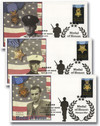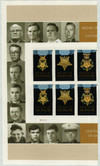
# 4988a - 2015 First-Class Forever Stamp - Medal of Honor: Vietnam War
U.S. # 4988a
2015 49¢ Medal of Honor: Vietnam
First-Class Mail
Value: 49¢ 1-ounce first-class letter rate
Issued: May 25, 2015
First Day City: Washington, D.C. – at the Vietnam Veterans Memorial
Type of Stamp: Commemorative
Printed by: Banknote Corporation of America/Sennett Security Products
Method: Offset with microprinting in double-sided sheets of 72 with 3 panes of 24 per sheet
Perforation: Serpentine Die Cut 11
Self-Adhesive
Quantity Printed: 30,000,000 stamps
The 2015 Medal of Honor stamps were designed by art director Antonio Alcalá, using photographs by Richard Frasier. The stamps were printed in a prestige folio, a new format the U.S.P.S. created for the Medal of Honor Series that began in 2013 to honor World War II award recipients. The folio pictures most of the nearly 50 living Vietnam War recipients and lists the names of all 258 honorees.
The 2015 Medal of Honor issue was the first in the series to include a stamp for Air Force recipients, as the award wasn’t created until 1965. The other stamps in the series are U.S. #4822-23, honoring World War II recipients and #4822a-23a, for Korean War recipients. The Medal of Honor was also previously honored in 1983 on U.S. #2045.
The Tet Offensive
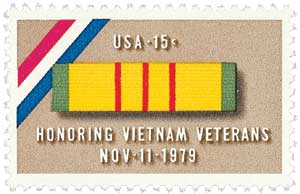
On January 30, 1968, the North Vietnamese Army launched a surprise attack on South Vietnam during the Tet (New Year) holiday truce.
The North Vietnamese began planning their General Offensive and Uprising in April 1967. They believed that the government in Saigon was so unpopular in the South that an attack on major cities there would lead the citizens to revolt, guaranteeing a swift victory and an end to calls for peace talks. Throughout the second half of 1967, North Vietnamese and Viet Cong soldiers moved 81,000 tons of supplies and 200,000 troops across the border.
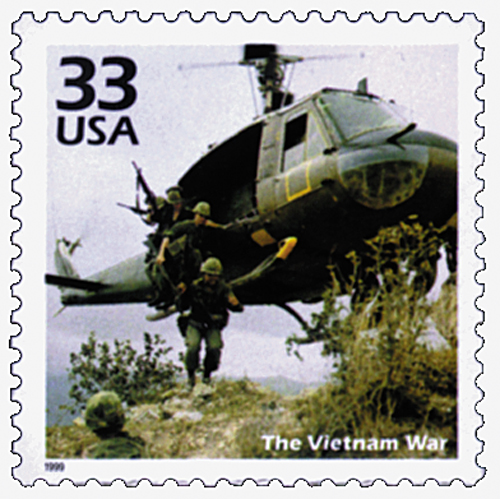
That October, they decided the Tet holiday would be the day to launch their attack, as the Americans and South Vietnamese (ARVN) would be observing the agreed-upon truce. In December, they launched a “diplomatic offensive,” claiming that Hanoi would consider negotiations if America halted their bombing campaign in North Vietnam. This was only a ruse to confuse the allies.
Though the Americans did not know what the North Vietnamese had planned, or when it would take place, they did see the signs. They noticed a large military buildup and were puzzled by the large battles that broke out in remote regions. In fact, these battles were part of the North Vietnamese plan to draw American troops away from the cities, their actual targets.
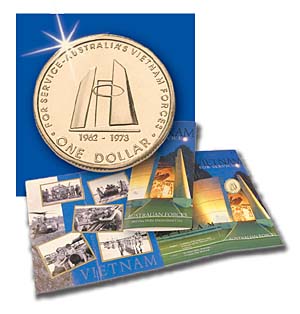
One of their greatest diversions was the attack on the military base at Khe Sanh on January 21. American MACV (Military Assistance Command, Vietnam) commander William Westmoreland saw the attack as a plot to overrun the base and take over the two northernmost provinces of South Vietnam. To prevent this, he sent half his men – 250,000 soldiers – to aid in the defense of Khe Sanh. Meanwhile, Frederick Weyand had noticed a large buildup of North Vietnamese around Saigon and requested some of those men be brought back to defend the capital city. Westmoreland called back 15 battalions to aid in the city’s defense, a move that may have helped save Saigon.
The Tet Offensive officially commenced shortly after midnight on January 30, 1968. The first target was Nha Trang, the headquarters of the US I Field Force. This was followed by attacks in the other provincial capitals: Ban Me Thuot, Kon Tum, Hội An, Tuy Hòa, Da Nang, Qui Nhơn, and Pleiku. In each of these attacks, they launched mortar and rocket barrages followed quickly by massive ground assaults. Though the Americans and South Vietnamese were caught off-guard, they drove their attackers from nearly all these locations by sunrise. MACV Chief of Intelligence Phillip B. Davidson alerted Westmoreland that he believed these attacks would continue across the country throughout the night and morning. Westmoreland then put all US and ARVN troops on maximum alert to brace for what was to come.
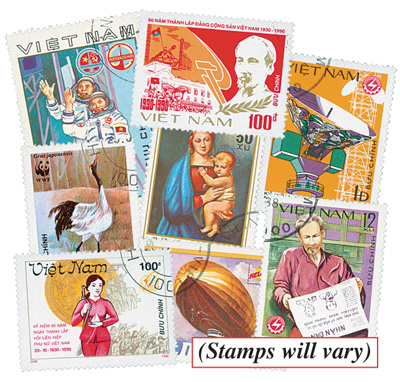
The next wave of attacks came at 3 a.m. on January 31. They attacked Saigon, Cholon, and Gia Dinh in the Capital Military District as well as 13 other cities and US bases. Saigon was the main target of the attacks. Though fighting continued in Saigon and other cities, the North Vietnamese launched a second wave of attacks on ten more cities on February 1st. In fact, over the course of the offensive, they attacked over 100 towns and cities, as well as every major allied airfield. In most cases, the North Vietnamese were driven out of town within two or three days. Fighting went on for much longer in at least five cities. During this time, none of the South Vietnamese troops deserted or defected to join the North Vietnamese, showing commitment to their cause.
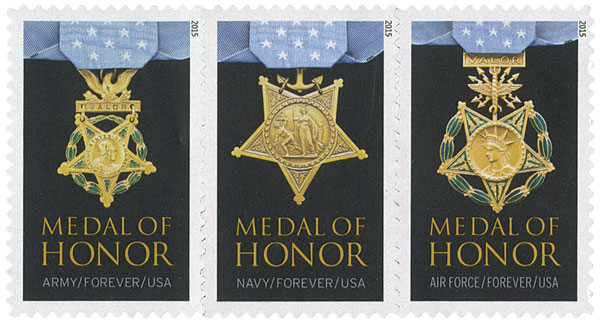
Huế was among the targets on January 31. The North Vietnamese captured the city that day and the Americans and ARVN spent nearly a month in street-to-street fighting to take it back. By March they had retaken control but at extreme cost. Most of the historic city was destroyed and thousands of civilians were dead or left homeless.
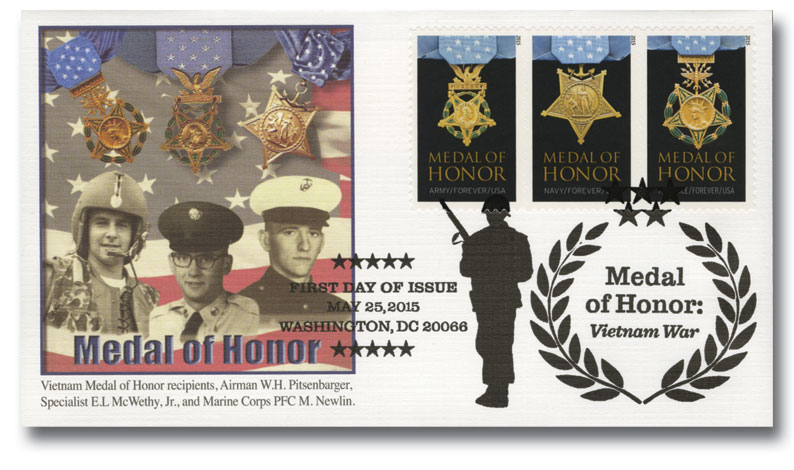
The first phase of the Tet Offensive was considered over by March 28, though fighting at Khe Sanh continued into April. The North Vietnamese launched two more attacks called Mini-Tets on May 4 and August 17. The offensive officially ended on September 23. The Tet Offensive was largely considered a failure for the North Vietnamese. They did not meet any of their objectives and nearly depleted their Viet Cong Army.
U.S. # 4988a
2015 49¢ Medal of Honor: Vietnam
First-Class Mail
Value: 49¢ 1-ounce first-class letter rate
Issued: May 25, 2015
First Day City: Washington, D.C. – at the Vietnam Veterans Memorial
Type of Stamp: Commemorative
Printed by: Banknote Corporation of America/Sennett Security Products
Method: Offset with microprinting in double-sided sheets of 72 with 3 panes of 24 per sheet
Perforation: Serpentine Die Cut 11
Self-Adhesive
Quantity Printed: 30,000,000 stamps
The 2015 Medal of Honor stamps were designed by art director Antonio Alcalá, using photographs by Richard Frasier. The stamps were printed in a prestige folio, a new format the U.S.P.S. created for the Medal of Honor Series that began in 2013 to honor World War II award recipients. The folio pictures most of the nearly 50 living Vietnam War recipients and lists the names of all 258 honorees.
The 2015 Medal of Honor issue was the first in the series to include a stamp for Air Force recipients, as the award wasn’t created until 1965. The other stamps in the series are U.S. #4822-23, honoring World War II recipients and #4822a-23a, for Korean War recipients. The Medal of Honor was also previously honored in 1983 on U.S. #2045.
The Tet Offensive

On January 30, 1968, the North Vietnamese Army launched a surprise attack on South Vietnam during the Tet (New Year) holiday truce.
The North Vietnamese began planning their General Offensive and Uprising in April 1967. They believed that the government in Saigon was so unpopular in the South that an attack on major cities there would lead the citizens to revolt, guaranteeing a swift victory and an end to calls for peace talks. Throughout the second half of 1967, North Vietnamese and Viet Cong soldiers moved 81,000 tons of supplies and 200,000 troops across the border.

That October, they decided the Tet holiday would be the day to launch their attack, as the Americans and South Vietnamese (ARVN) would be observing the agreed-upon truce. In December, they launched a “diplomatic offensive,” claiming that Hanoi would consider negotiations if America halted their bombing campaign in North Vietnam. This was only a ruse to confuse the allies.
Though the Americans did not know what the North Vietnamese had planned, or when it would take place, they did see the signs. They noticed a large military buildup and were puzzled by the large battles that broke out in remote regions. In fact, these battles were part of the North Vietnamese plan to draw American troops away from the cities, their actual targets.

One of their greatest diversions was the attack on the military base at Khe Sanh on January 21. American MACV (Military Assistance Command, Vietnam) commander William Westmoreland saw the attack as a plot to overrun the base and take over the two northernmost provinces of South Vietnam. To prevent this, he sent half his men – 250,000 soldiers – to aid in the defense of Khe Sanh. Meanwhile, Frederick Weyand had noticed a large buildup of North Vietnamese around Saigon and requested some of those men be brought back to defend the capital city. Westmoreland called back 15 battalions to aid in the city’s defense, a move that may have helped save Saigon.
The Tet Offensive officially commenced shortly after midnight on January 30, 1968. The first target was Nha Trang, the headquarters of the US I Field Force. This was followed by attacks in the other provincial capitals: Ban Me Thuot, Kon Tum, Hội An, Tuy Hòa, Da Nang, Qui Nhơn, and Pleiku. In each of these attacks, they launched mortar and rocket barrages followed quickly by massive ground assaults. Though the Americans and South Vietnamese were caught off-guard, they drove their attackers from nearly all these locations by sunrise. MACV Chief of Intelligence Phillip B. Davidson alerted Westmoreland that he believed these attacks would continue across the country throughout the night and morning. Westmoreland then put all US and ARVN troops on maximum alert to brace for what was to come.

The next wave of attacks came at 3 a.m. on January 31. They attacked Saigon, Cholon, and Gia Dinh in the Capital Military District as well as 13 other cities and US bases. Saigon was the main target of the attacks. Though fighting continued in Saigon and other cities, the North Vietnamese launched a second wave of attacks on ten more cities on February 1st. In fact, over the course of the offensive, they attacked over 100 towns and cities, as well as every major allied airfield. In most cases, the North Vietnamese were driven out of town within two or three days. Fighting went on for much longer in at least five cities. During this time, none of the South Vietnamese troops deserted or defected to join the North Vietnamese, showing commitment to their cause.

Huế was among the targets on January 31. The North Vietnamese captured the city that day and the Americans and ARVN spent nearly a month in street-to-street fighting to take it back. By March they had retaken control but at extreme cost. Most of the historic city was destroyed and thousands of civilians were dead or left homeless.

The first phase of the Tet Offensive was considered over by March 28, though fighting at Khe Sanh continued into April. The North Vietnamese launched two more attacks called Mini-Tets on May 4 and August 17. The offensive officially ended on September 23. The Tet Offensive was largely considered a failure for the North Vietnamese. They did not meet any of their objectives and nearly depleted their Viet Cong Army.





